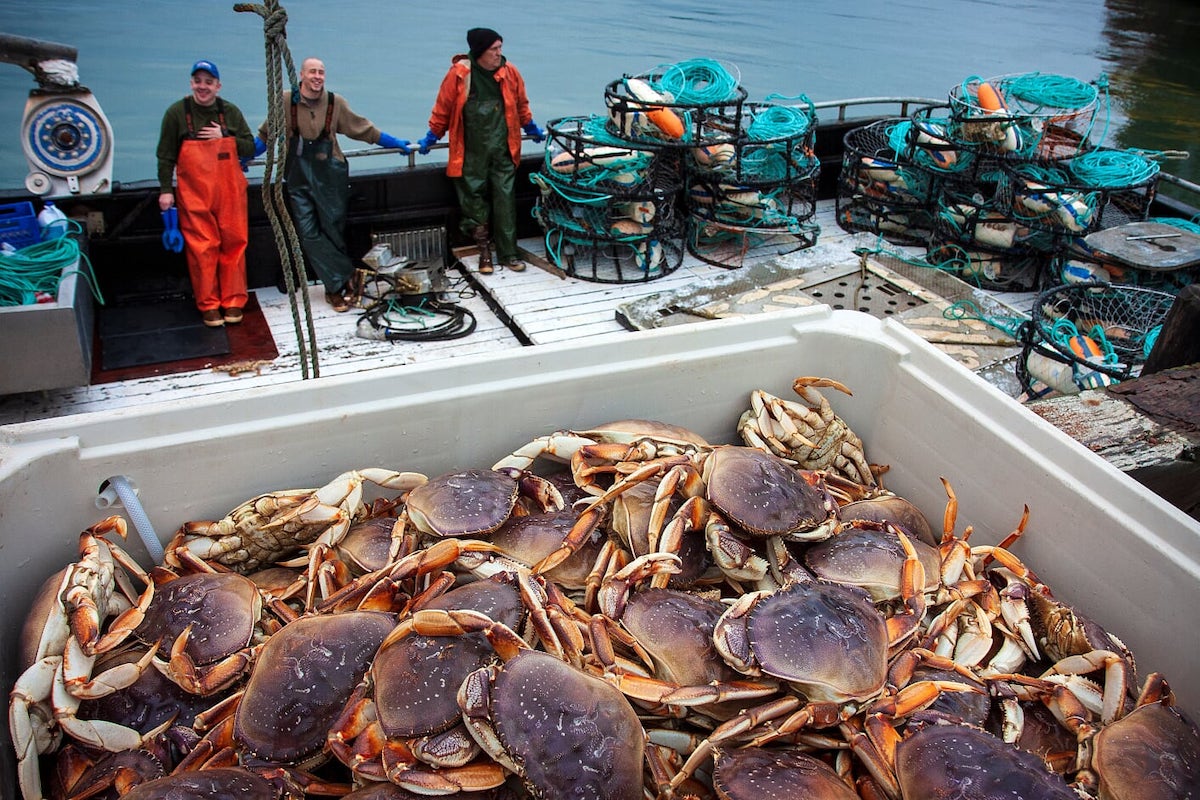THE PACIFIC OCEAN IS ACIDIFYING

By: Scottie Andrew
Photo: CNN
The Pacific Ocean is becoming more acidic, and the cash-crabs that live in its coastal waters are some of its first inhabitants to feel its effects. The Dungeness crab is vital to commercial fisheries in the Pacific Northwest, but lower pH levels in its habitat are dissolving parts of its shell and damaging its sensory organs, a new study found.
Their injuries could impact coastal economies and forebode the obstacles in a changing sea. And while the results aren’t unexpected, the study’s authors said the damage to the crabs is premature: The acidity wasn’t predicted to damage the crabs this quickly.
“If the crabs are affected already, we really need to make sure we pay much more attention to various components of the food chain before it is too late,” said study lead author Nina Bednarsek, a senior scientist with the Southern California Coastal Water Research Project.
The findings were published this month in the journal Science of the Total Environment and funded by the National Oceanic and Atmospheric Administration (NOAA). The agency studies ocean acidification and how changing pH levels are impacting coasts.
How the ocean acidifies
The ocean is acidifying because it’s absorbing more carbon dioxide from the atmosphere, which lowers pH levels in the water. Ocean acidification changes the coasts, releasing excess nutrient that can create algae blooms and increasing sea temperatures and salinity, according to NOAA.
But for crustaceans and coral that rely on carbonate ions, which are less abundant in more acidic waters, to build their shells and coral skeletons, it becomes more difficult to build strong shells.
It’s not just crabs, either: Oysters, clams and plankton all rely on the same carbonate ions to strengthen themselves. And humans and sea creatures alike rely on them — some for food, others for economic security.
How it hurts the crabs
The acidification corroded the young shells of Dungeness crab larvae, which could impair their ability to deter predators and regulate their buoyancy in the water, the researchers said.
The crab larvae that showed signs that their shells were dissolving were smaller than the other larvae, too. This could cause developmental delays that could mess with their rate of maturation. The tiny hair-like structures crabs use to navigate their environments were damaged by the low pH levels, too — something scientists had never seen before. Crabs without these mechanoreceptors could move more slowly and have difficulty swimming and searching for food.
“We found dissolution impacts to the crab larvae that were not expected to occur until much later in this century,” said Richard Feely, study co-author and NOAA senior scientist.
What’s next
It’s not clear if the same forces could negatively impact adult Dungeness crabs, a question that requires more research. But with the obstacles a crab larvae faces in its early development, it’s got less of a chance to survive to adulthood.
As for the acidifying ocean, NOAA proposes two methods of attack: Reducing our overall carbon footprint to reduce the carbon dioxide absorbed by the sea, or teach wildlife and the people who rely on it to adapt to how the sea will change.
NOAA works with local fishery manages and policy makers on conservation efforts — and researchers hope their findings might be enough to convince them to take immediate action.




